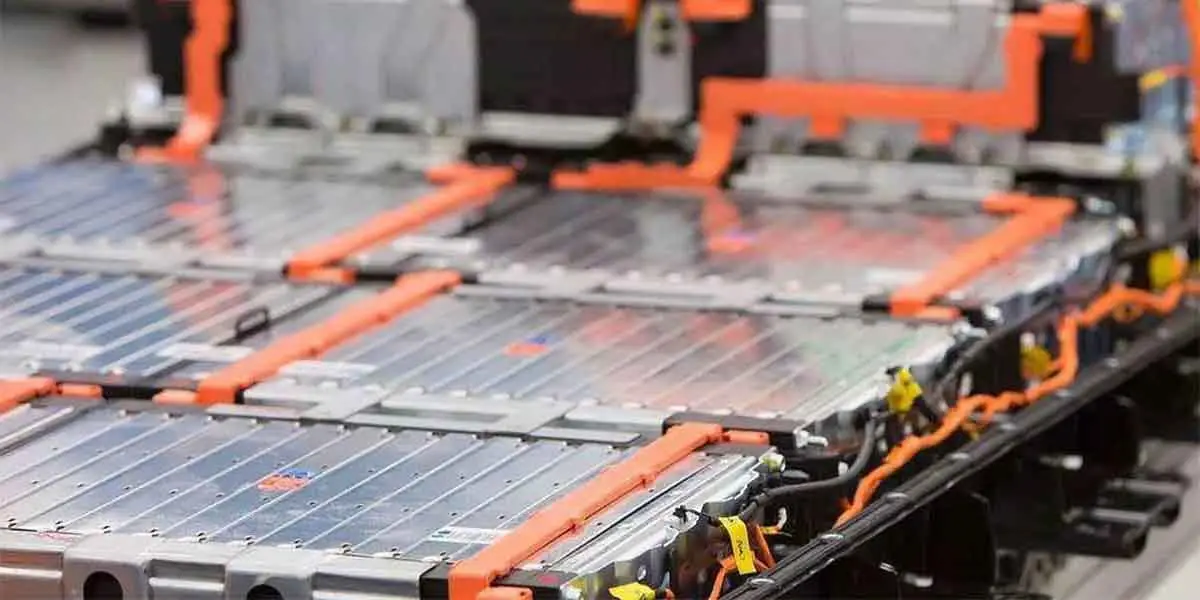
Is LiFePO4 the same as lithium ion
In 1996, researchers at the University of Texas (with other contributors) discovered phosphate as a cathode material for rechargeable lithium batteries. LiFePo4 can provide good electrochemical performance with low resistance. The main advantages of this “lithium technology” are a high current carrying capacity (discharging and charging currents), a long service life (charging cycles), good thermal stability and better security compared to conventional Li-Ion technologies. Thermal runaway only occurs at around 270°C.
The main disadvantages compared to Li-Ion include the low nominal voltage (3.2V), lower energy density, higher self-discharge and sensitivity to cold.
In practice, LiFePo4 batteries are often used as a replacement for lead-acid batteries, because the series connection of 4 battery cells, each with 3.2V, results in a voltage of 12.8V, similar to 12V lead-acid batteries
LiFePO4 vs. lead acid batteries
LiFePO4 batteries have significant advantages over common lead-acid batteries in terms of cycle stability (service life), dimensions, energy density and weight.
Compared to conventional lead-acid batteries, LiFePO4 can be almost completely discharged without suffering major voltage dips. While a lead-acid battery can deliver about half of its nominal capacity, the nominal capacity of a LiFePO4 battery is almost the real, removable capacity.
Furthermore, the LiFePO4 battery is characterized by a comparable long service life. The Renogy batteries can reach 2000 complete charging cycles without hardly any loss of capacity and voltage (DOD 100%).
DOD stands for “Depth of Discharge” and means a depth of discharge. Since LiFePo4 batteries have no memory effect, they do not have to be “emptyed” completely. If your consumer (device) switches off before the end of discharge voltage of the battery, you “gain” in service life. For example, if you only discharge 12 volt batteries (12.8V) to approx. 11.8V (approx. 50% depth of discharge), you can even achieve up to 10,000 charging cycles with your battery.
A battery is a consumer product. The battery loses capacity over time. A normal course can be seen in the sketch above.
Compared to lead-acid batteries, LiFePo4 are very sensitive to overcharging, and the currents (discharge) output depend on the built-in BMS (Battery Management System).
In terms of temperature, the LiFePo4 is not quite sensitive, as is often suggested. Even if it is often claimed otherwise, the cold affects LiFePo4 more than conventional Li-Ion batteries. The LiFePo4 battery has its optimal environment at room temperature. The colder the area around the battery, the greater the loss in terms of voltage level and capacity.
Applications
LiFePo4 batteries can be used almost anywhere where lead batteries were previously used. Whether small or large solar systems, caravans, motors, UPS systems (uninterruptible power supply) or medical devices, LiFePo4 batteries can easily replace conventional lead-acid batteries. Even small devices such as echo sounders, measuring devices, toys, etc. can be operated longer with such batteries.
Choosing the right applications depends on the ability of a LiFePo4 battery to deliver the output currents. This is controlled by the BMS (Battery Management System).
The fewer currents (C rate) required, the more robust and durable the battery is. Therefore, the LiFePo4 with its almost constant voltage level is ideally suited as a replacement for UPS systems. The C factor, also known as the C rate, is a colloquial quantification for charging and discharging currents for accumulators. With this value, for example, the maximum permissible charging and discharging currents can be specified, depending on the nominal capacity. For example, a 10Ah battery is discharged at a rate of 0.2C with 10 x 0.2 = 2 amps. At 0.5C discharge rate that is 5 amperes and at 1C discharge rate 10 amperes.
Are LiFePO4 batteries expensive?
The purchase price of LiFePo4 is often seen as a disadvantage compared to lead-acid batteries. This is only partially true, because in many applications where lead-acid batteries are quickly exhausted, the LiFePO4 battery is even cheaper. The long service life of well over 2000 charging and discharging cycles means that the price per Wh is far below the price per Wh for lead-acid batteries over time.
To demonstrate this, we will compare 2 12V batteries, each with 12Ah, for use with a consumer with a similar voltage level.
The LiFePO4 has approx. 144Wh of real usable energy, which can be called up over 2000 charging cycles. This battery has 288 kWh of energy in its lifetime.
The conventional lead-acid battery can reach about 300 charging cycles and can only be discharged up to 60% in real terms. With approx. 90Wh x 300 charging cycles, this battery will only be able to provide 27 kWh. The LiFePo4 has 10 times as much energy during its lifetime and “may” cost 10 times as much.
LiFePO4 is often used in conjunction with solar systems, and if you plan to build an off-grid solar system, solar tax credit is something you need to pay attention to. This might save you a lot of money.
BMS – it doesn’t work without it
The BMS (Battery Management System) is the most important component in a LiFePo4 battery, because this control not only protects against overcharging and deep discharge, but also limits the current that can be drawn (expressed in amperes). One speaks of a protection against overdischarge.
Another important function is the so-called balancing of the battery cells. In order for a battery to remain durable and have the same performance, all the battery cells installed in the battery must remain as homogeneous as possible over time. The battery cells in the battery pack must therefore show a similar voltage level at all times.
The last function is temperature monitoring. The battery cells heat up during the charging and discharging processes. The temperature monitoring ensures that the battery cells do not get too warm and lose their performance as a result.
Is every LiFePO4 battery the same?
LiFePo4 batteries are made with LiFePo4 battery cells. Manufacturers of LiFePo4 battery cells are now a dime a dozen (they mainly come from China).
The difference between different batteries consists of several factors such as:
- The quality of the built-in battery cells
- The quality of the control (BMS)
- The quality of manufacture
We, at Renogy, work together with Heter Electronics Group, one of the leading manufacturers of LiFePo4 battery cells and battery systems worldwide. All battery cells installed by us are UL certified, as are some battery systems.
What types of LiFePo4 battery cells are there?
The battery cells are the “storage material” of a battery. If you connect them in series (serial), the voltage increases. If you connect the battery cells in parallel, the capacity increases. What you need to know about series vs parallel battery.
In 12V (12.8V) LiFePo4 batteries, 4 battery cells are connected in series. 4 x 3.2V (nominal) = 12.8V
In practice, roughly 3 types of battery cells have become established:
Cylindrical battery cells – also known as round cells. Such battery cells are available in different sizes. The 18650 and 26650 formats (26 mm diameter, 65 mm length) are the most common.
Pouch Cells – The pouch cells look like Li-Polymer battery cells. The advantage of these battery cells is that they can be easily produced in different dimensions. Their biggest disadvantage is usually the inferior quality
Prismatic battery cells – this type of battery cells can be found in two variations:
- as a plastic housing in which several round cells (cylindrical battery cells) are connected in parallel
- as individual blocks:
How do I know if a battery is of good quality?
We are often confronted with this question and the answer to this question is not easy to answer. The LiFePo4 battery is often manufactured in a sealed plastic housing. Opening the case without damaging it is hardly possible. By the way, if you plan to build an off-grid solar system, store the power in LiFePO4 batteries. Solar power calculator is exactly what you need.
Other housing systems with screws can also be opened, but without measuring devices and/or professional knowledge about the built-in battery cells, they will hardly be able to reveal anything to the layperson.
We therefore recommend justifying the purchase decision using circumstantial evidence. We list these arguments here:
Salesperson
- Buy from specialists who are verifiably familiar with the subject of accumulators and charging technologies. Avoid vendors that don’t specialize in selling accumulators.
- Pay attention to the technical description of the product. Sellers who know their products well should describe important features of the product and, if necessary, provide advice.
- Caution when purchasing outside the EU! In this case, they are considered the importer and bear personal liability for any damage caused to third parties. Furthermore, you lose any consumer rights such as the right of return, warranty, etc.
Product
- Compare the properties of similar products. Make sure that the product is described professionally. In particular, make sure that no fantasy values are advertised, such as capacity, performance of the BMS, etc.
- Watch out for serious price differences between different providers. If a product appears suspiciously cheap, you should pay attention.
Look for major differences in purchased attributes such as weight vs. capacity. The value of the capacity is often exaggerated, because many sellers know how difficult it is to calculate the capacity without measuring instruments. The weight of the battery helps as an indication. As a rule, LiFePo4 batteries have a net amount of energy of approx. 90Wh – 110Wh per 1000 grams of material (housing, BMS, cable and welding material are not taken into account and can weigh between 300 and 700 grams depending on the version). A 12V 100ah lithium battery has 1280Wh and from our experience it can weigh between 12.50 kg and 15 kg.








